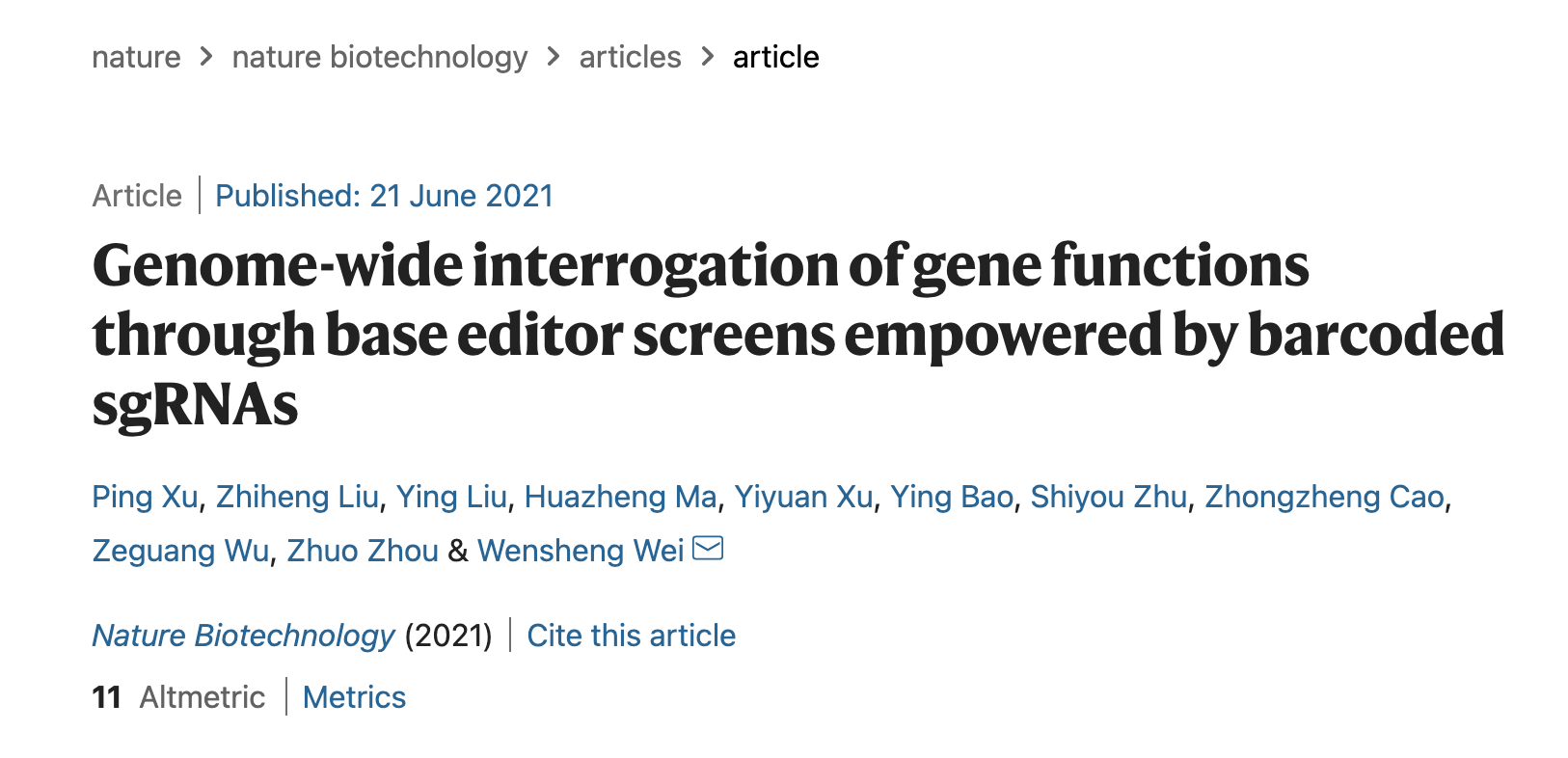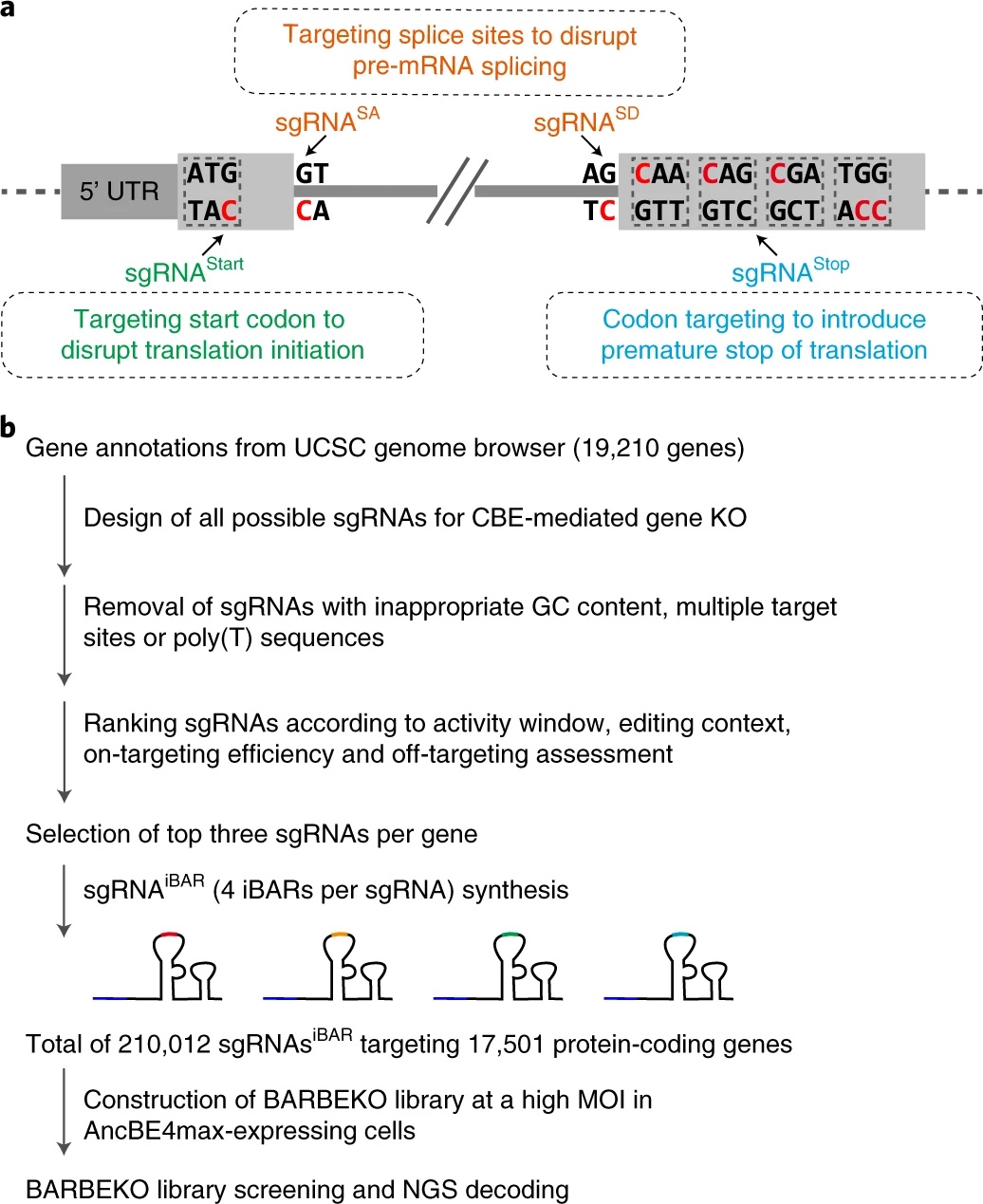
Nat. Biotechnol. | An efficient and precise method for high-throughput functional screens based on base editors
High-throughput functional screens based on CRISPR/Cas9 system have become powerful tools in various biomedical settings including cancer research and drug discovery. Despite its success and broad applications, canonical CRISPR knockout (CRISPR-KO) screens rely on Cas9-induced DNA double-strand breaks (DSBs), which could exert anti-proliferation effects, especially in high copy-number and mismatch tolerance regions. Thus, CRISPR-KO screens may lead to gene-function-independent false-positive results in high-throughput screens. Moreover, primary or non-transformed cells are particularly susceptible to Cas9-induced DSBs because these DNA lesions activate the p53 pathway, which causes cell cycle arrest or death. Currently, it is debated whether it is feasible to apply large-scale screens in primary cells or other DSB-sensitive cell type. However, there are no satisfying solutions by now.

On June 21, Wensheng Wei’s lab reported a DSB-independent, genome-wide CRISPR screening method termed iBARed cytosine Base Editing-mediated gene KnockOut (BARBEKO) in Nature Biotechnology. This method leverages CRISPR cytosine base editors for genome-scale knockout screens by perturbing gene start codons or splice sites, or by introducing premature termination codons. Furthermore, it is equipped with iBAR, a strategy devised for improving screening quality and efficiency. By constructing such a cell library through lentiviral infection at a high MOI (up to 10), it can achieve efficient screening results with substantially reduced starting cells (10-100 folds) in both positive and negative selection screens. Importantly, compared to CRISPR-KO screens, BARBEKO screens are no longer affected by DSB-associated cytotoxicity in HeLa, K562, or DSB-sensitive RPE1 cells (Fig. 1).
BARBEKO strategy could be particularly useful for loss-of-function screens in complex models such as primary cells, organoids, and in vivo studies, in which the source of cells is usually limited and sensitive to DNA damages. As such, BARBEKO offers a valuable tool to complement the current CRISPR-KO screens in various settings.

Fig. 1 | BARBEKO method achieved efficient and precise screens in multiple cell lines.
Wensheng Wei, professor of biochemistry and molecular biology in BIOPIC, is the senior authorship of this study.
Other co-authors are graduate student Ping Xu, postdoctoral scholar Zhiheng Liu, postdoctoral scholar Ying Liu, and graduate student Huazheng Ma. The work was supported by the National Science Foundation of China (NSFC31930016, NSFC31870893), Beijing Municipal Science & Technology Commission (Z181100001318009), the Beijing Advanced Innovation Center for Genomics at Peking University and the Peking-Tsinghua Center for Life Sciences.